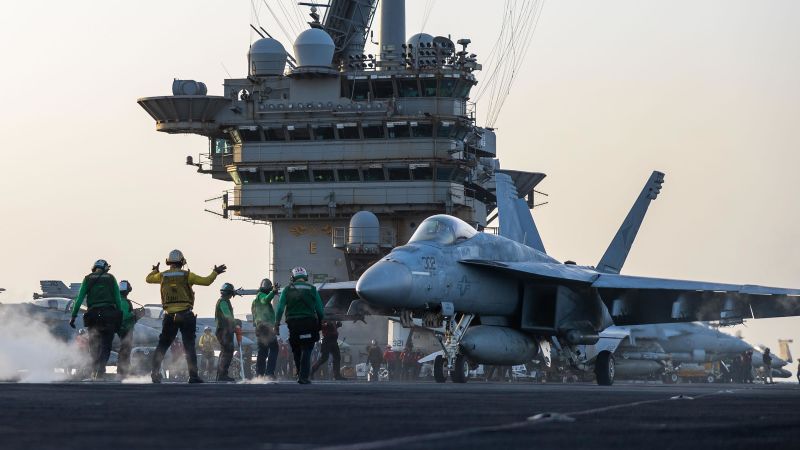US Navy F/A-18 Super Hornet Lost at Sea
CNN
The US Navy confirmed that an F/A-18 Super Hornet fighter jet sank in the sea after falling overboard from the USS Harry S. Truman aircraft carrier during an attempted towing operation on Monday.
According to a US official, initial assessments indicated that the Truman made a sudden maneuver to avoid Houthi fire, which led to the jet’s fall. Yemen’s Houthi rebels have asserted that they launched a drone and missile strike on the carrier, which is currently operating in the Red Sea as part of a significant US military initiative against the Iran-backed group.
All personnel on board the carrier are accounted for, and one sailor sustained a minor injury, reported the Navy. An official statement noted, “The F/A-18E was actively being towed in the hangar bay when the crew lost control. Both the aircraft and the tow tractor fell into the sea.” An inquiry into the incident is currently underway.
A second US official confirmed to CNN that the aircraft has sunk. The Navy has indicated that each F/A-18 jet costs over $60 million. Remarkably, despite being nearly 1,100 feet long and weighing almost 100,000 tons, US Navy carriers like the Truman are quite agile for their size.
Nimitz-class carriers such as the Truman can reach speeds above 34 mph, powered by two nuclear reactors. While specific details of the Truman’s evasive maneuver have not been disclosed, visual evidence from the Defense Department suggests these large vessels can significantly tilt during rapid turns.
Former US Navy Captain Carl Schuster explained that carriers typically employ a “zig-zag” strategy to evade missile threats, executing alternating 30- to 40-degree turns, each lasting about 30 seconds. He noted that during these maneuvers, the ship would lean approximately 10 to 15 degrees, potentially shifting its position by 100 to 200 yards from the targeted point if traveling at full speed.



